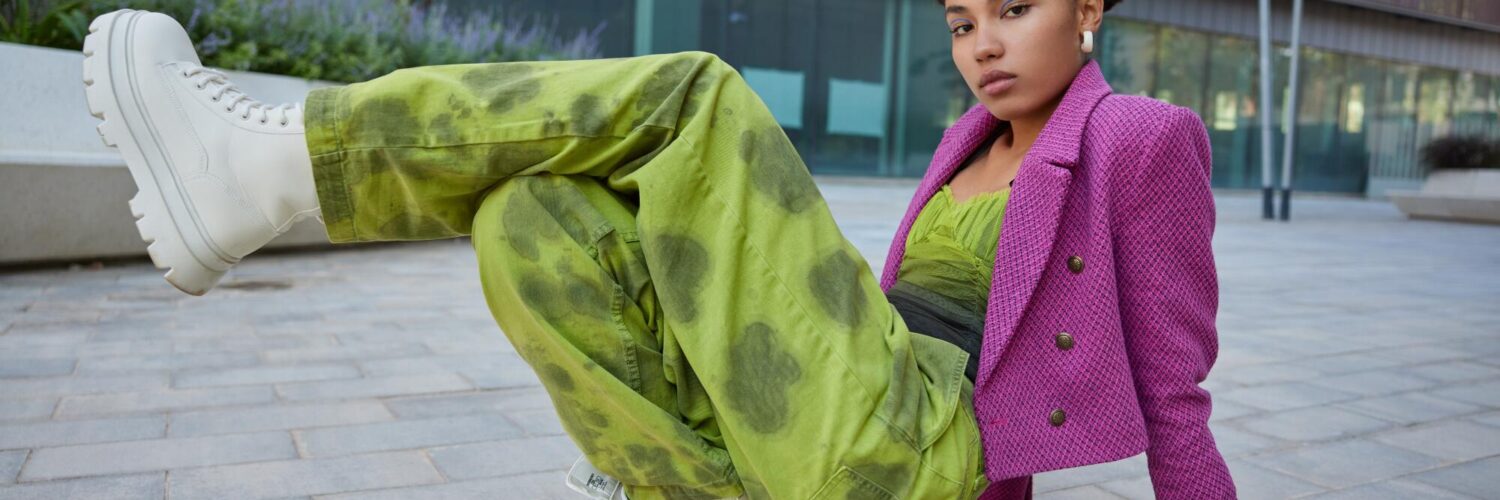Step into your closet. Look around. Are you seeing a variety of colors, shapes, materials, and styles?
That’s the beauty of modern outfits. They’re no longer about fitting into a single trend. They’re about expressing individuality, about breaking boundaries.
From the sleek cut of a well-tailored suit to the bold statement of a graphic tee, modern outfits have been shaped by cultural shifts and a constantly evolving fashion industry. Join us as we explore how modern outfits have changed over time.
Early Modern Period to the 19th Century: The Birth of Tailoring
In the early modern period, tailoring made its grand appearance. Clothes were no longer just pieces of fabric draped, tied, or belted in place.
Tailoring paved the way for local artisans. They made fitted clothing, adding structure and sophistication to everyday wear.
For instance, let’s consider the iconic ‘doublet.’ It was a staple of men’s fashion from the 14th to the 17th century. The doublet was a fitted jacket that showcased the tailoring craft.
Later, the frock coat emerged in the 19th century. This was another testament to the changing sartorial tastes.
In women’s fashion, too, the transformation was significant. Corsets were introduced, which, although restrictive, demonstrated the skill and precision of tailoring. Bustles and crinolines, used to exaggerate the shape of women’s skirts, also became popular.
These historical examples showcase the beginning of modern outfits. It was an era where fit and structure started to matter in how people presented themselves. The evolution of tailoring was a crucial step toward the diverse outfits we relish today.
The 1910s: A Decade of Liberation and Innovation
The early 20th century saw a significant shift in societal norms and fashion. The corset was gradually abandoned, giving women more freedom to move.
This change paved the way for looser silhouettes. It led to the emergence of drop-waist dresses becoming increasingly popular.
The First World War also had a notable impact on fashion trends. With men being called to war, women took on traditionally male roles and wore trousers. This led to the introduction of tailored separates for women.
At the same time, technological advancements like the sewing machine and synthetic fabrics allowed for more variety in clothing production. The 1910s saw a burst of innovation and liberation in fashion, laying the foundation for modern outfits.
The Roaring 20s to the 1940s: From Flapper Dresses to New Look
The Roaring Twenties came in like a storm, and the iconic ‘Flapper’ style emerged. These were short, loose-fitting dresses, a stark departure from the corsets and bustles of previous eras.
The flapper dress was a symbol of liberation. It embodied the spirit of the newfound freedom and rebelliousness of women. These dresses often had intricate beadwork and fringe details.
Then, the 1930s brought back a certain level of sophistication and elegance. The Great Depression led to more restrained fashion choices.
Hemlines dropped, silhouettes became more streamlined, and bias-cut dresses became the rage. These dresses hugged the body and accentuated the female form, contrasting to the boxy shapes of the 1920s.
Then came the 1940s, a decade heavily influenced by World War II. Practicality was key due to fabric rationing.
Women’s outfits consisted mainly of tailored suits and dresses with minimal adornment. Despite the simplicity, charm and resilience were reflected in this era’s fashion.
The Mid-Century: From Dior’s New Look to the Mini Skirt
The 1950s saw a wave of change in fashion, with Christian Dior’s ‘New Look’ revolutionizing women’s clothing. This era of full skirts and cinched-in waists marked a return to femininity after the war years.
The following decade brought about another significant shift in style. This is the time of the introduction of the mini skirt by designer Mary Quant. It was a symbol of youthfulness, rebellion, and freedom.
The mid-century also saw the rise of casual wear, including jeans and t-shirts, as popularized by icons like James Dean and Audrey Hepburn. These outfits became a staple in everyday fashion and remain relevant even today.
The 1960s to the 1990s: The Era of Counterculture and Individuality
A spirit of counterculture and individuality marked the 1960s. The youth were pushing boundaries and expressing their authentic self through their outfits.
For instance, the hippie movement saw a surge in the popularity of tie-dye shirts, bell-bottom pants, and long, flowing skirts. These outfits were often adorned with vibrant colors and unique patterns.
In the 1970s, fashion took a turn towards glam and disco-influenced styles. Clothing became more extravagant, with sequin dresses and bell-bottom pants becoming wardrobe staples. An iconic example would be the outfits of ABBA, known for their glittering, flamboyant attire.
The 1980s brought power dressing to the forefront. Elements of masculine clothing heavily influenced women’s fashion. Shoulder pads, pantsuits, and bold colors were the norm.
Then, the 1990s saw a return to minimalistic, grunge-inspired fashion. Denim, oversized flannel shirts, and band T-shirts were the order of the day. TV shows like “Friends” perfectly encapsulate the era’s laid-back, casual style.
In each of these decades, she brought forth unique styles and trends, reflecting the spirit of the times.
The Early 2000s to the Present: A Fusion of Styles and Constant Evolution
In the early 2000s, fashion became more about mixing and matching styles than adhering to a particular trend. The rise of social media also led to a democratization of fashion. Influencers are now showcasing their style and inspiring others.
Today, modern outfits are all about self-expression. From streetwear to festival wear to avant-garde high fashion, there is no limit to the creativity in modern outfits.
Technology has also played a significant role in shaping modern outfits. From smart fabrics to 3D printing, fashion is constantly evolving and pushing boundaries.
There has also been a growing focus on sustainable practices in the fashion industry. Fashion brands are now incorporating eco-friendly materials. They are also upcycling fabric scraps and promoting ethical production methods.
Modern Outfits: A Reflection of Our Times
From tailoring to counterculture, modern outfits have seen a plethora of influences and transformations over the centuries. Today’s fashion is about inclusivity, self-expression, and sustainability.
As we continue to evolve as a society, so will our clothing choices. What remains constant is the power of fashion to reflect our times, break boundaries, and inspire us to embrace ourselves.
So go ahead and step out in your modern outfit. There’s no better way to showcase who you are than through fashion.
Was this article helpful? Then check out the rest of our site for more.






Add comment